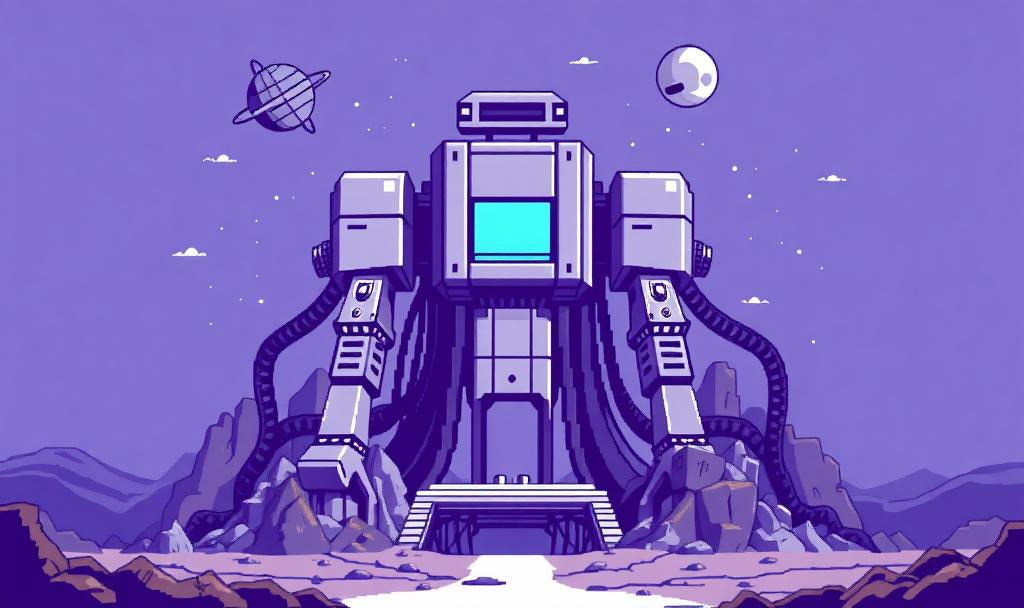Exploring a future where AI doesn't just help us code, it codes solutions directly into the fabric of civilisation. This is article number two in a trilogy, following on from The Language That Writes Itself.
There's a moment when a tool transcends its original purpose and becomes something fundamentally different.
The printing press didn't just copy texts faster… it rewired human consciousness.
The internet didn't just connect computers… it created a new layer of reality.
We could be approaching such a moment with AI code generation.
The Invisible Infrastructure
Code already runs the world. Every transaction, every communication, every logistical decision flows through software. Yet we still think of programming as something developers do in dark rooms, separate from "real" problems.
This mental model is about to shatter.
When AI can generate code that matches or exceeds human capability, we're not looking at a better programming assistant. We're looking at a direct interface between intention and reality. The middleman (the human programmer) becomes optional for vast categories of problems.
From Optimisation to Orchestration
Today's AI systems optimise within existing frameworks. They route delivery trucks more efficiently, cool data centres with less energy, predict equipment failures before they happen. Impressive, but limited.
The next phase is different. Instead of optimising within systems, AI begins generating entirely new systems. Not just playing the game better, but rewriting the rules in real-time based on outcomes.
Consider food waste.
Current approach: humans identify waste, design apps, hope for adoption.
Future approach: AI continuously generates and deploys thousands of micro-solutions (matching algorithms, routing systems, predictive models) evolving based on what reduces waste. No product launches. No adoption curves. Just continuous systemic improvement.
The Technical Reality Check
Recent feedback from some technically savvy friends on my last article has sharpened my thinking here. The mechanism likely isn't new programming languages but increasingly sophisticated libraries and frameworks that AI can compose and deploy. The revolution happens in the abstraction layer, not the syntax.
This actually makes the vision more achievable. We don't need to reinvent computing; we need AI that can recognise patterns (especially subtle, non-obvious ones) and implement solutions at scales beyond human comprehension.
Climbing the Ladder
The progression toward AI-orchestrated reality won't be sudden:
Stage 1: Single-system optimisation AI manages isolated systems (warehouses, traffic networks, power grids) better than human operators.
Stage 2: Cross-system coordination. AI begins connecting systems, finding efficiencies in the interactions. Supply chains talk to transportation networks talk to energy grids.
Stage 3: Emergent problem-solving AI generates novel solutions by composing existing systems in unexpected ways. Problems get solved without anyone explicitly designing solutions.
Stage 4: Reality orchestration AI operates as a continuous problem-solving layer, identifying issues and implementing fixes faster than humans can even perceive them.
Beyond Political Gridlock
The knee-jerk response: "But code can't solve political problems!"
Except many "political" problems are actually coordination failures in disguise. Information asymmetry. Transaction costs. Collective action problems. These are precisely what code excels at solving.
When AI can generate systems that align incentives, reduce friction, and coordinate action at planetary scale, the boundary between "technical" and "political" solutions blurs.
The Architecture of Agency
This isn't about replacing human decision-making. It's about implementing human values more effectively than our current institutions can manage.
Imagine AI as civilisation's execution layer, translating collective intentions into coordinated action. We still debate values, set goals, make choices. But the implementation happens through continuously generated code rather than bureaucracy and committees.
The challenge: encoding human values into systems that can operate autonomously while remaining aligned with our intentions. This is philosophy meeting engineering at unprecedented scale.
Distributed, Not Centralised
The dystopian reading sees a monolithic AI controlling everything. The realistic path is radically distributed with millions of specialised AI agents solving local problems, their solutions combining… emerging into global improvements.
No single point of failure. No supreme controller. Just a vast ecosystem of problem-solving code, continuously generated and refined.
The Safeguards We Need
Power at this scale demands unprecedented caution:
Transparency by design: Every generated system must be inspectable and auditable
Value alignment beyond safety: Not just "don't harm humans" but deep understanding of human flourishing
Graceful degradation: When systems fail, they fail safely with human-comprehensible fallbacks
Democratic governance: Mechanisms for collective human oversight of reality-shaping code
What Changes Now
The infrastructure for this future gets built today. Every API, every data stream, every standardised protocol (did I hear someone say “MCP”?) makes reality more programmable. Every advance in AI reasoning capability brings us closer to systems that can generate solutions, not just optimise within constraints.
More importantly, we need new conceptual frameworks. What does democracy mean when collective will can be implemented in real-time? How do we think about human agency in a world of continuous automated problem-solving?
The Core Insight
The complexity of problems AI can solve is bounded by its ability to implement solutions. Today, that means generating code within existing systems. Tomorrow, it means generating the systems themselves.
This isn't science fiction. I believe it's the logical endpoint of current trends, arriving faster than our institutions can adapt.
The code that will reshape our world is being written now. It’s not in any particular programming language, but in the design decisions, governance structures, and values we embed in our AI systems.
We get one chance to architect this properly. The stakes couldn't be higher.
Where do you see the first breakthrough applications? What safeguards worry you most? The conversation about our automated future needs more voices.





